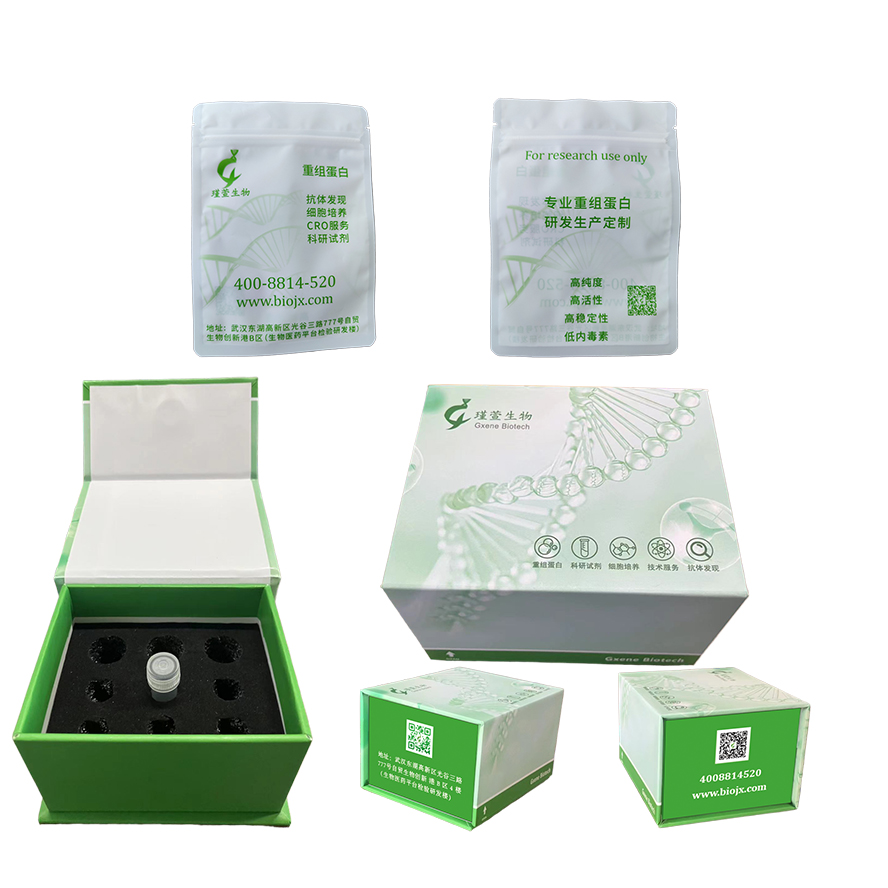研究方向
1. 基本概述
- 定义:MetAP2(又称p67)是一种依赖金属离子的蛋白酶,属于Methionine Aminopeptidase家族,负责催化新生蛋白质N端甲硫氨酸(Met)的切除,是蛋白质翻译后修饰的关键酶。
- 别名:MetAP-2、p67 Eukaryotic Initiation Factor-2-Associated Protein。
- 表达分布:广泛表达于所有真核细胞,高活跃于增殖旺盛的组织(如肿瘤、血管内皮细胞)。
2. 结构与催化机制
(1) 蛋白结构
- 金属结合位点:依赖二价金属离子(Co²⁺/Mn²⁺)激活,活性中心含保守的HXXHXH模体。
-
结构域:
- N端催化域(含双金属离子结合位点)。
- C端介导蛋白互作(如与eIF2α结合调控翻译起始)。
(2) 酶学特性
-
底物特异性:切除N端Met的条件:
- 第二氨基酸为小侧链(Gly、Ala、Ser、Pro等)。
- 避免大侧链或带电荷残基(如Arg、Lys)。
3. 功能与调控
(1) 生理功能
- 蛋白质成熟:确保蛋白质正确折叠和定位(如约60%人类蛋白质需MetAP2加工)。
- 翻译调控:通过eIF2α互作影响翻译起始复合物组装。
(2) 病理作用
- 血管生成:MetAP2是抗血管生成靶点,抑制其活性可阻断内皮细胞迁移(如肿瘤微环境)。
- 肿瘤依赖:多种癌细胞(如结直肠癌、胶质瘤)依赖MetAP2高表达维持增殖。
4. 疾病关联与治疗应用(2025年更新)
(1) 抗肿瘤药物开发
-
小分子抑制剂:
- Fumagillin(天然产物)及其衍生物(如TNP-470):通过共价修饰His231抑制MetAP2,因神经毒性限制临床使用。
- 新型抑制剂:非共价结合型化合物(如APL-1202)进入II期试验(联合PD-1治疗实体瘤)。
(2) 抗纤维化治疗
- 抑制MetAP2可减轻肝纤维化(通过调控HSC活化,2024年《Hepatology》研究)。
(3) 感染性疾病
- 抗疟原虫:靶向疟原虫MetAP2(PfMetAP2)的抑制剂(如化合物791)处于临床前阶段。
5. 研究工具与资源
- 基因数据库:METAP2 基因ID:10988(NCBI Gene),定位12q22-q23。
-
抗体与试剂:
- 抗人MetAP2抗体(克隆3F2,Santa Cruz #sc-166122)。
- 重组人MetAP2蛋白(R&D Systems #4766-MT)。
- 动物模型:Metap2条件性敲除小鼠(胚胎致死,需诱导型敲除)。
生物活性
Measure by its ability to remove methionine from a fluorogenic peptide substrate HMet-Gly-ProAMC. The resulting GPAMC is cleaved by Recombinant Human DPPIV/CD26. The specific activity is >15 pmol/min/µg, as measured using the described conditions.
Swiss Prot:
P50579-1
种属:
Human
表达宿主:
Sf9
表达区间:
Ala2-Tyr478
实际分子量:
66
kDa
标签:
C-
10*His tag
纯度:
>90% by SDS-PAGE.
内毒素:
<0.1EU/ug of the protein by LAL method.
制剂:
Lyophilized from a 0.22 μm filtered solution of PBS, pH 7.4.Contact us for customized product form or formulation.
描述:
Recombinant Human Human Methionine
Aminopeptidase 2/p67 Protein is produced by Sf9 expression system. The target protein is expressed with sequence (Ala2-Tyr478) of Human Human Methionine
Aminopeptidase 2/p67 (Accession P50579-1) fused with a C-
10*His tag.
储存:
Store at -20℃.Store the lyophilized protein at -20℃ to -80 ℃ up to 1 year from the date of receipt.
After reconstitution, the protein solution is stable at -20℃ for 3 months, at 2-8℃ for up to 1 week.
未开盖的干粉蛋白在 -20°C至-80°C可保存12个月;
复溶之后,蛋白溶液在-20°C及以下可保存3个月,在2-8℃可保存1周。
复溶:
Centrifuge the vial before opening. Reconstitute to a concentration of 0.1-0.5 mg/mL in sterile distilled water. Avoid vortex or vigorously pipetting the protein. For long term storage, it is recommended to add a carrier protein or stablizer (e.g. 0.1% BSA, 5% HSA, 10% FBS or 5% Trehalose), and aliquot the reconstituted protein solution to minimize free-thaw cycles.
收到重组蛋白产品之后请检查蛋白冻干粉末是否贴于瓶底,如果粉末浮起,开盖之前请先低温离心。将蛋白用说明书中指定的缓冲液复溶至0.1-0.5 mg/mL(请注意蛋白复溶浓度不能低于0.1 mg/mL),室温平衡5-10 min保证充分溶解,复溶过程中请不要剧烈涡旋及吹打蛋白溶液。如需长期储存,建议复溶时添加载体蛋白或者稳定剂(如0.1% BSA, 5% HSA, 10% FBS 或者 5% 海藻糖),同时将复溶后的蛋白溶液按照需求进行分装,储存于-20°C至-80°C,随取随用,避免反复冻融。

